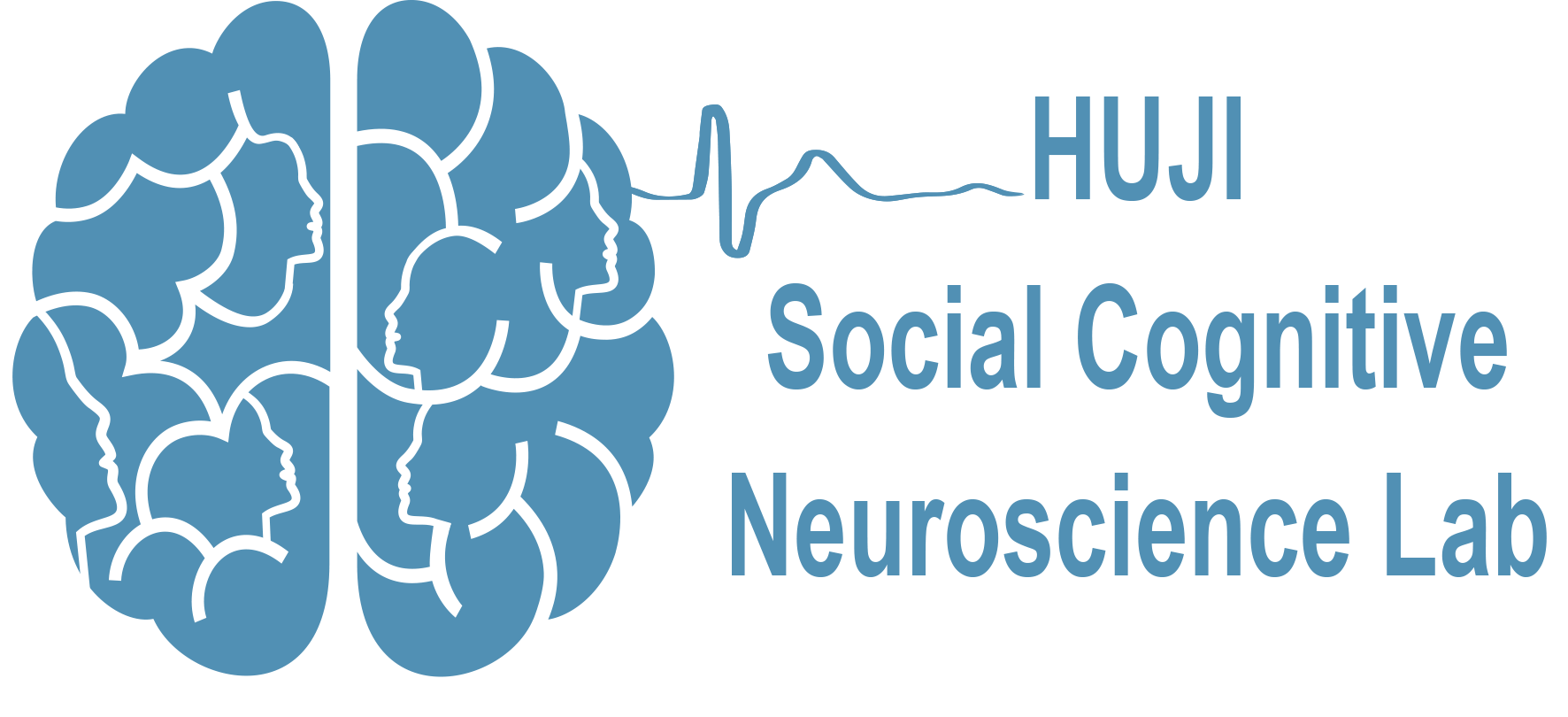Rum, Y., Genzer, S., Golan, O., Allison, C., Baron-Cohen, S., & Perry, A. . (2025).
Empathy and Interest Towards an Autistic Person and the Effect of Disclosing the Diagnosis.
Journal of Autism and Developmental Disorders. Retrieved from
Publisher's VersionAbstractThis study investigates the effects of disclosing an autism diagnosis on non-autistic listeners' empathy and social interest towards the autistic discloser. In Study 1, participants (non-autistic students in the social sciences/humanities [n = 99; 70% female]) watched a video of an autistic adult sharing an autobiographical story and reported how they believed the storyteller felt, following an introduction in which the storyteller did or did not disclose their diagnosis. Their evaluation of the storyteller's emotions was compared to the storyteller's own reports, resulting in an empathic accuracy measure. Participants reported how empathic they felt towards the storyteller and how socially interested they were in them. Studies 2 and 3 replicated the same procedure with STEM students (n = 96; 40% female), and with non-student adults (n = 76; 50% female) from diverse professional/occupational backgrounds, with an additional question about working together. In Study 1, participants in the self-disclosure condition demonstrated higher empathic accuracy, reported more empathy, and greater social interest in the storyteller. Study 2 showed a similar trend of higher empathy in the self-disclosure condition but no differences in social interest measures. Interest in working with the storyteller was higher in the self-disclosure condition. In Study 3, participants in the self-disclosure condition demonstrated higher empathy and greater interest in hearing another story and working with the storyteller. An individual's self-disclosure of an autism diagnosis improved others' ability to empathize with them and willingness to work with them. We discuss the complex effect of self-disclosure on social interest in an autistic person.
Kassem, N., Nir, N., Perry, A., & Halperin, E. . (2025).
Intergroug Emotions in Intergroup Conflicts: Power Disparities Perspective.
The Handbook of Social and Political Conflict, 31-45. Wiley Blackwell.
Abstract
Intergroup emotions play an integral part in conflicts, as they shape both intragroup and intergroup behaviors. These emotions mobilize societies in favor of either war or peace (Cohen-Chen et al., 2014b; Halperin et al., 2011). Lines of research have demonstrated that discrete emotions have been associated with specific outcomes of war/peace processes (Gayer et al., 2009; Halperin et al., 2013; Spanovic et al., 2010). Based on the valence of the emotion, and later on the valence of the outcome associated with it (Cohen-Chen et al., 2020), emotions were divided into constructive and destructive emotions, regardless of the power status of the group, which remains an understudied factor. For example, anger has been considered a destructive emotion motivating violence, whereas empathy had been seen as a constructive emotion mobilizing support for peace (Cheung-Blunden & Blunden, 2008; Maoz & McCauley, 2005). In this chapter, we challenge the oversimplistic approach by offering a novel framework that incorporates group power status in the categorization of the instrumentality of emotions.
Previous literature shows that differing realities in asymmetrical conflict also influence group goals and interests (Leshem & Halperin, 2020). Both high- and low-power groups aim to end war and bloodshed, but power dynamics lead the high-power group to prioritize harmonious relationships and maintain the status quo and, thus, may oppose compromises. This approach safeguards privileges and minimizes resistance. Conversely, the disadvantaged group prioritizes justice, having endured unequal circumstances and seeking to change the status quo by their own means, such as collective action.
The main implication of the fact that high- and low-power groups in conflicts have different goals and aspirations is that, for each group, different emotions play different roles in promoting these goals and aspirations, and consequently, in mobilizing them toward war or peace. To address that complexity, we propose a novel theoretical framework in which these desirable goals have underlying emotions that could be categorized into three units: constructive, destructive, and differential emotions. This model serves as the foundation to develop adjusted intervention tools that take into account the group power status, thus better tackling inequality and fostering peace and social justice among groups in asymmetrical conflicts. For example, by considering the differential effect of anger depending on the power status of the group, intervention tools can be developed to help attain social equality by facilitating concessions among the advantaged and by fostering a quest for equality attainment among the disadvantaged.
Gordon-Hecker, T., Choshen-Hillel, S., Ben-Simon, E., Walker, M. P., Perry, A., & Gileles-Hillel, A. . (2025).
Restless nights, cold hearts: Poor sleep causally blunts empathy
.
International Journal of Clinical and Health Psychology,
25(1), 100548. Retrieved from
Publisher's VersionAbstract
Poor sleep is pervasive in modern society. Poor sleep is associated with major physical and mental health consequences, as well as with impaired cognitive function. Less is known about the relationship between sleep and emotional and interpersonal behavior. In this work, we investigate whether poor sleep impairs empathy, an important building block of human interaction and prosocial behavior. We aimed to capture the effects of poor sleep on the various aspects of empathy: trait and state, affect and cognition.
Study 1 (n = 155) assessed daily habitual sleep over several days, and global sleep quality in the past month. Participants who reported worse sleep quality exhibited lower empathic caring and perspective-taking traits. Study 2 (n = 347) induced a one-night disruption of sleep continuity to test a causal relationship between sleep and empathy. Participants in the sleep disrupted condition had to briefly wake up five times over the night, whereas the sleep-rested controls slept normally. In the next morning, participants’ empathy and prosocial intentions were assessed. Participants in the sleep disruption condition exhibited lower empathic sensitivity and less prosocial decision-making than sleep-rested controls.
The main contribution of this work is in providing a robust demonstration of the multi-faceted detrimental effects of poor sleep on trait and state empathy. Our findings demonstrate that poor sleep causally impairs empathic response to the suffering of others. These findings highlight the need for greater public attention to adequate sleep, which may impact empathy on a societal level.
Lehmann, M., Genzer, S., Kassem, N., Van Tongeren, D. R., & Perry, A. . (2025).
Intellectual Humility Predicts Empathic Accuracy and Empathic Resilience
.
Personality and Social Psychology Bulletin. Retrieved from
Publisher's VersionAbstractThree preregistered studies (N = 533) investigated the relationship between intellectual humility (IH) and cognitive and emotional empathy. Study 1 (n = 212) revealed a positive association between IH and empathic accuracy (EA), especially toward the outgroup. Study 2 (n = 112) replicated the significant association between IH and EA. Study 3 (n = 209) employed a manipulation to enhance IH to demonstrate causality. We found evidence for an indirect effect, wherein the manipulation increased state IH, which was associated with greater EA. A mini meta-analysis revealed that, on average, individuals with higher levels of IH exhibit increased EA, showing a greater understanding of others’ emotional states. Moreover, IH predicts empathic resilience—buffering against personal distress while maintaining or increasing empathic concern for others. These findings highlight the positive influence of IH on empathy, emphasizing its potential for fostering deeper connections and better understanding in social interactions.
Rubin, M., Li, J. Z., Zimmerman, F., Ong, D. C., Goldenberg, A., & Perry, A. . (2025).
Comparing the value of perceived human versus AI-generated empathy.
Nature Human Behaviour. Retrieved from
Publisher's VersionAbstract
Artificial intelligence (AI) and specifically large language models demonstrate remarkable social–emotional abilities, which may improve human–AI interactions and AI’s emotional support capabilities. However, it remains unclear whether empathy, encompassing understanding, ‘feeling with’ and caring, is perceived differently when attributed to AI versus humans. We conducted nine studies (n = 6,282) where AI-generated empathic responses to participants’ emotional situations were labelled as provided by either humans or AI. Human-attributed responses were rated as more empathic and supportive, and elicited more positive and fewer negative emotions, than AI-attributed ones. Moreover, participants’ own uninstructed belief that AI had aided the human-attributed responses reduced perceived empathy and support. These effects were replicated across varying response lengths, delays, iterations and large language models and were primarily driven by responses emphasizing emotional sharing and care. Additionally, people consistently chose human interaction over AI when seeking emotional engagement. These findings advance our general understanding of empathy, and specifically human–AI empathic interactions.

